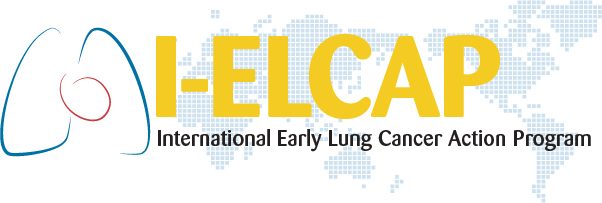Previous Meetings
The 9th International Conference on Screening for Lung Cancer
Friday, October 24, 2003 to Saturday, October 25, 2003
University of Miami, Jackson Memorial Hospital
Miami
United States
Agenda: 9th Conference Agenda
Mission:
The broadest mission of these Conferences is the collective pursuit of avant-garde understanding of the issues surrounding screening for lung cancer, the broadest subissues being early diagnosis and early intervention. Any given Conference focuses on issues that are particularly topical at the time.
As always, the Conference will provide an update on research, practice of screening for lung cancer and updates of the I-ELCAP protocols and results. The Eighth Conference focused on the potential treatment alternatives for various subtypes of screen-diagnosed cancers. This Ninth Conference will focus on questions of overdiagnosis, staging of small, early lung cancers and ancillary findings of other smoking-related diseases in the context of CT screening for lung cancer.
Consensus Statement:
This conference first reviewed interim progress in the International Early Lung Cancer Action Program (I-ELCAP) consortium towards its two broad missions — to advance policy-relevant research on early diagnosis of lung cancer and to translate up-to-date understandings into guidelines for practice. Updates of the protocol and the ELCAP Management System were presented. The methodology for pooling the data from the I-ELCAP institutions was detailed and some of the latest results were presented. The latter focused on preliminary results on behavioral questions and on the smoking cessation achieved within the CT screening programs. The conference then proceeded to address issues of overdiagnosis, staging, screening post diagnosis of cancer, ancillary findings in the context of screening, and treatment of screen-diagnosed cancers.
The discussion on overdiagnosis brought out that this term is used in reference to two very different concepts. One of the concepts is diagnosis (rule-in) of a case of cancer when the lesion actually is benign. The other concept is that of diagnosing actual cancer which, even without treatment, will not be fatal because the person will die of some other cause. The importance of distinguishing between these two concepts and the need to consider both was highlighted, while the concept of ‘indolent cancer’ was taken to be a contradiction in terms. The frequency of diagnosing benign lesions as cancers needs to be estimated — from follow-up experience — for different subtypes of lung cancer diagnosis; and indications for screening need to be defined with a view to prospects for succumbing to other (‘competing’) causes of death.
Based on an extensive review by the Expert Pathology Panel, problems with the current staging criteria were identified. They concerned, in the main, cases of multiple malignant lesions, and particularly when there is no lymph node involvement; and staging was seen to be critical to the choice of treatment (surgery vs. chemotherapy). If the cell-types of the lesions are the same, the T status currently is supposed to be changed from T1 or T2 to either T4 or M1 according to whether the lesions are in the same or in different lobes, while if the cell-types are different, the lesions currenlty are to be classified as separate primaries. But as adenocarcinoma is a very frequent cell-type, the likelihood of finding the same cell-type is high even with separate primaries. No resolution of this staging problem was presented, but members of the Expert Pathology Panel recommended that these be treated as Stage I cases until long-term follow-up is available for new staging criteria to be developed.
CT screening following diagnosis of lung cancer was discussed as a matter of acting on a particularly high-risk indication for the screening. The I-ELCAP protocol does call for continuing the screening in the usual manner and documentation of it in the ELCAP Management System. Several groups within the I-ELCAP consortium are concerned with possible refinements of the follow-up protocols.
CT screening for lung cancer leads to findings of coronary, mediastinal and abdominal abnormalities. Management of these findings require further development of the protocol. A summary of the mediastinal abnormalities in more than 9000 screenees was presented, showing detection of asymptomatic thymomas in about 1%. Some progressed and others regressed. Appropriate treatment and follow-up of such cases was debated.
As the final topic, new treatments for Stage I screen-diagnosed lung cancers were discussed. It was decided that at the next conference there should further development of research protocols, and that treatment studies would ideally be done in collaboration with existing external groups.
The miscellaneous scientific presentations on the second day stimulated much discussion and continued to highlight many important points. These sessions were, again, affirmed as an important part of the conferences.
